When you are moving by water in an archipelago as jammed tight with land masses at this one in Finland, it can feel like a case of sailor’s claustrophobia. The rocky lines of demarcation between land and water start closing in like enemy troops in an uneven and futile battle to keep our keel wet and free.
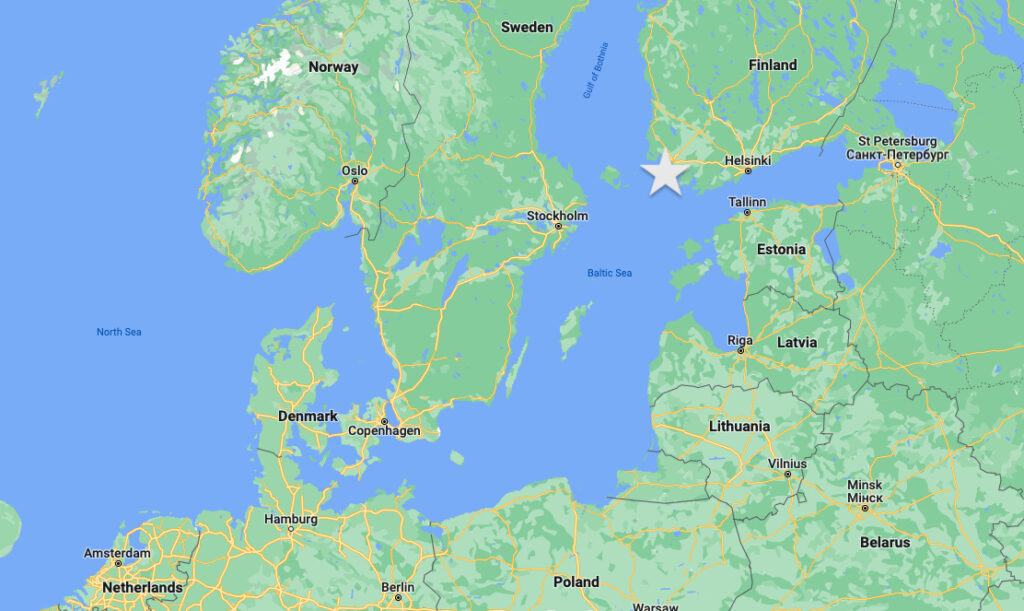
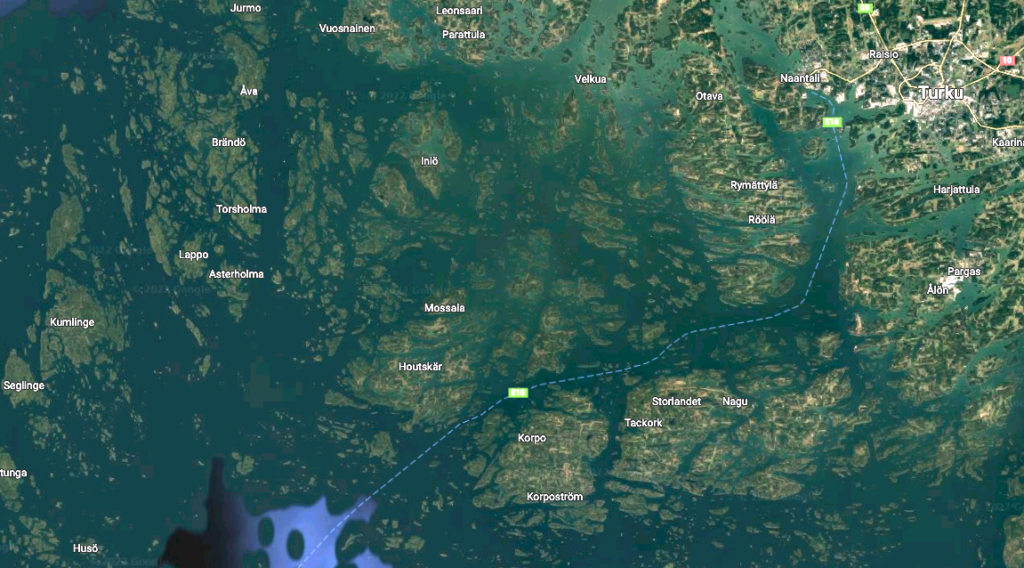
The space taken up by land in the Turku Archipelago of Finland is deceptive. Viewed from a satellite in space, the few large islands seem to present no real challenge to navigation. But if you are one to fret over the details like we do, a close-up image reveals just how many islands stand in the way of rhumb line sailing. In fact, the plethora of small land masses made this archipelago the perfect spot for pirates and smugglers to hide out during the early 1900’s. We carried no contraband onboard nor enemies in our lee (that we knew of), but from our stern we did bear witness to the forces of modern day unrest. First, a quick-moving Finnish Coast Guard ship slipped by on our starboard side. Then, the distinctive ’thwat-thwat’ sound of rotor blades swooped in from the cloud cover at our stern announcing the arrival of the first of two military helicopters. Finally, to our surprise and heart-palpitating joy, a U.S. flagged patrol boat came tearing through the water. Our good ‘ol Navy men and women were conducting joint exercises, and took a moment away from their duties to wave back to a couple of hyper-excited American sailors far from home. Embarrassingly, I’ve had only one colleague enter the Navy, but halfway around the world, with mutual adversaries just one time zone away, the strong feeling of kinship prevails.
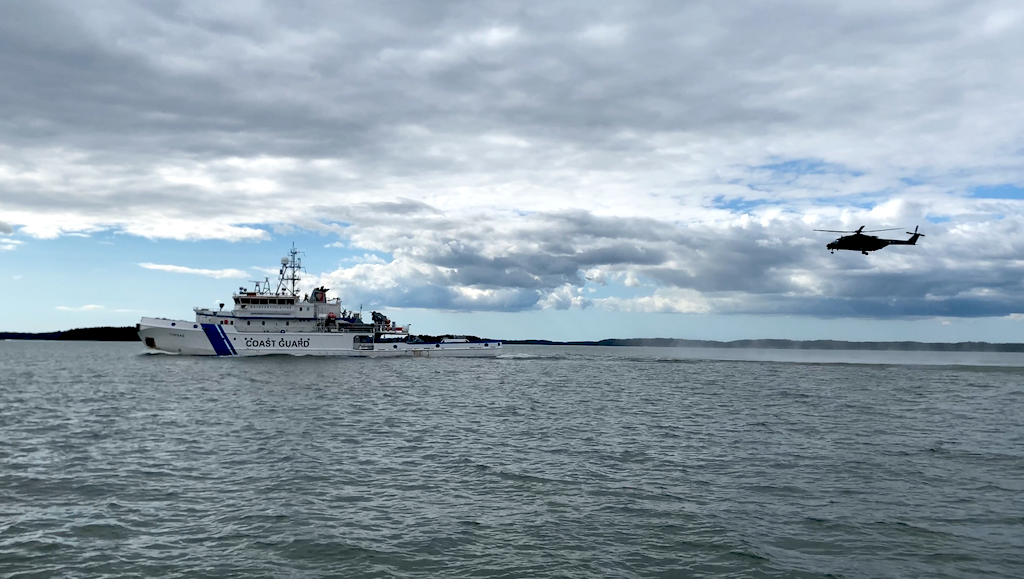
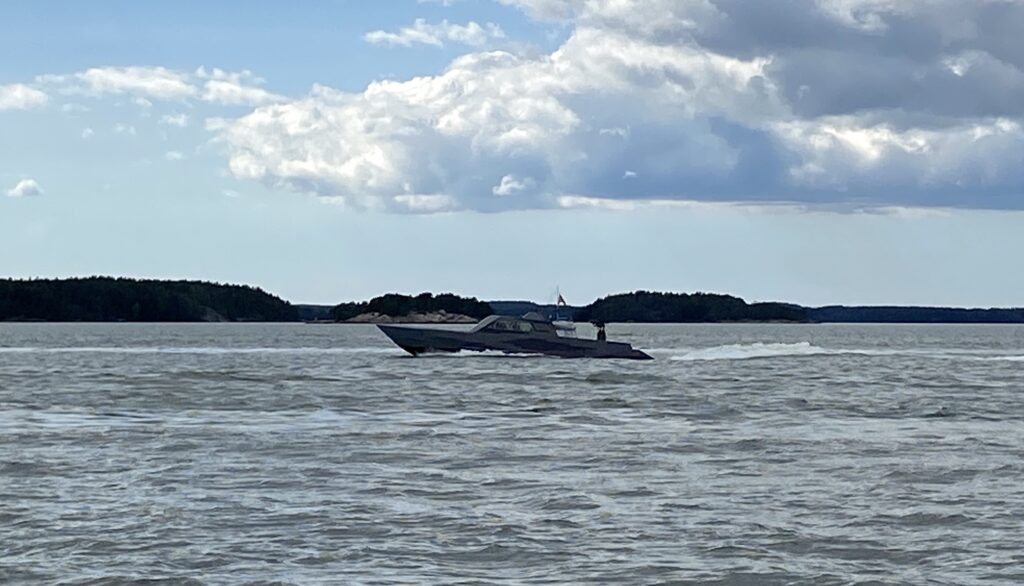
In this unusually wide channel, the buoys led us directly into the harbor of Turku, where we settled Sea Rose tight between two outer pilings in the ‘box’ style mooring configuration we thought we had left behind back in the Netherlands. This was the historic Ruissalo Telakka Abo Batvarv boatyard. Between 1891 and 1954, over 5200 wooden yachts, workboats, patrol craft, and torpedo boats were built here, making it for a time the largest boatbuilder in the Nordics. Full boatbuilding came to an end in 2016, but old railways and rusty cranes still grace the property, providing a sense of permanence and gratitude to the craftsmen of that bygone era. And like salmon finding their way back to their spawning grounds, a fleet of sleek restored wooden sailing sloops adorned the dock across from us providing a stark contrast with our modern fiberglass craft, a mere infant at five years old. More vintage wooden boats arrived right after us as the boatyard prepared for an annual rendezvous of their offspring, coming home to mingle with siblings and trade stories of their adventures.
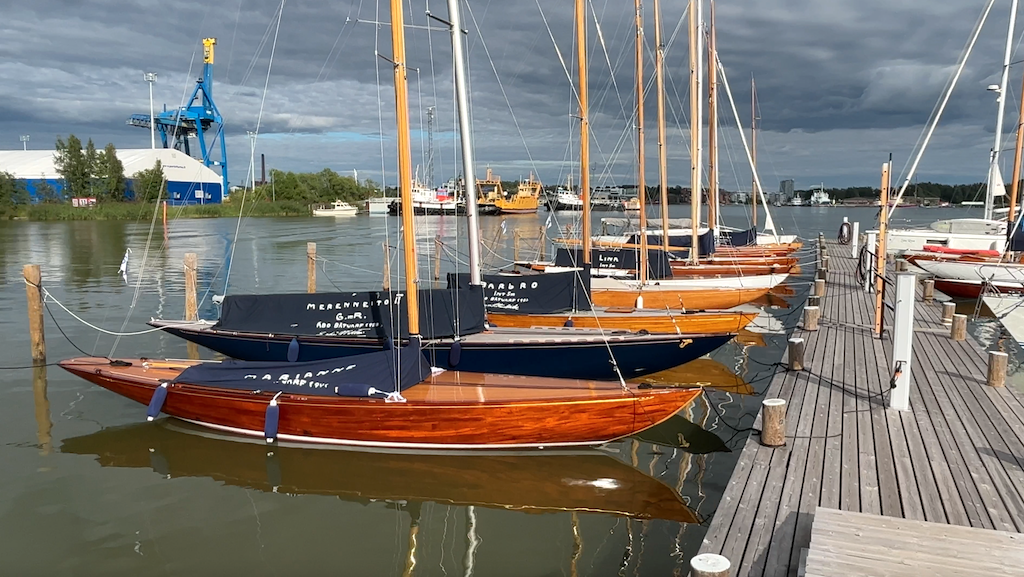
Ashore, in a wide low slung shed, these beautiful sloops would soon be hauled out and stored for the winter on an unassuming earthen floor, providing the right amount of moisture to protect the wood planks from drying out. But the present day economics of a shipyard demand the creative use of assets, and this large shed had been temporarily repurposed into a summertime open air theater. Other work buildings on the property had been recently converted into restaurants and wedding venues. At Zake’s pizzeria, overlooking the waterfront, we found that as patrons turned to gawk at the large passenger ferries arriving from Sweden, resident seagulls, like their brothers and sisters around the world, had perfected the art of dive-and-dash, very similar to dine-and-dash, providing free food courtesy of distracted humans.
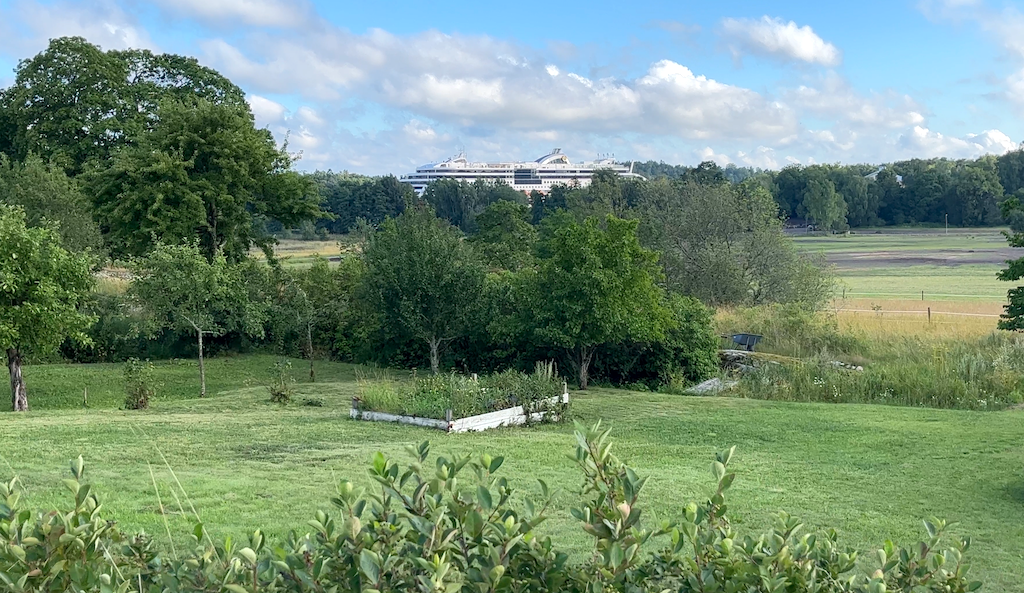
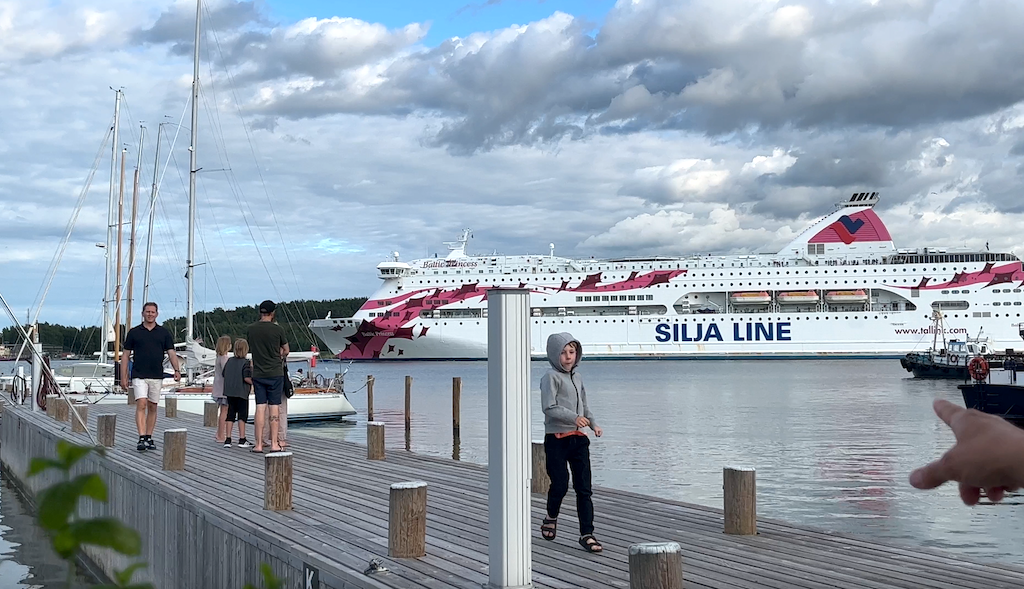
The Ruissalo Telakka shipyard was a short water taxi ride from central Turku, a city huddled around both sides of the Aura river where progress was in the making. Massive steel girded shipbuilding cranes, once the defining element of the harbor’s skyline, were now being boxed in by ultra-modern multi-level apartments and office space. To remove the cranes, the city might risk the loss of its heritage, casting it into a future misguided and bland. We have all ventured along the edge of a harbor whose heart has been ripped from its soul, leaving its visitors to grasp for clues, to wonder if the amazing potential of craftsmen and women once graced this land. Not here. The signs were everywhere.
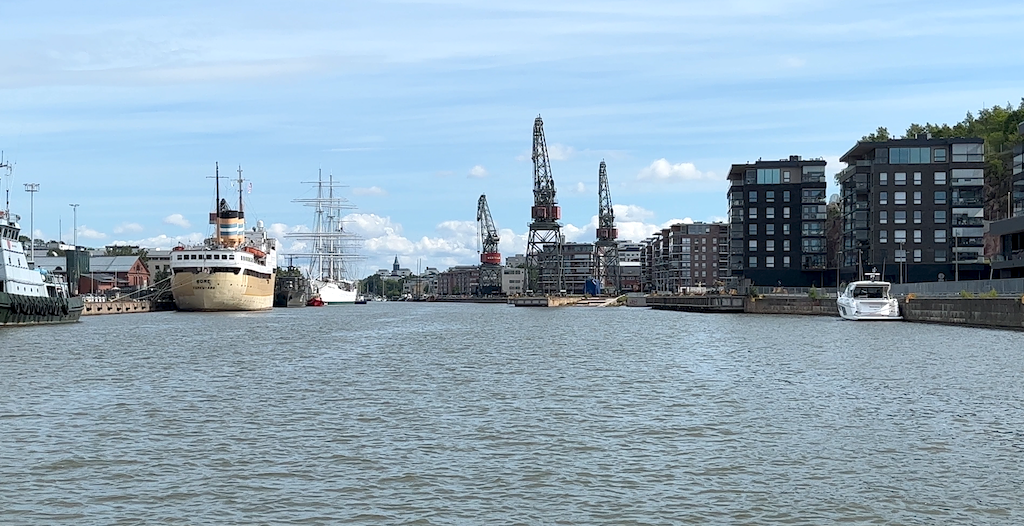
Turku’s shipbuilding industry, in addition to the fine wooden yachts and small craft of Ruissalo Telakka, centered around large commercial vessels, most recently the design and construction of state-of-the-art cruise ships. The city’s love and admiration for the maritime trades shone through along the Aura river where Karen and I toured one of the largest and most impressive maritime museums we’ve ever seen, and we’ve seen plenty of them. It gives me no end of joy to see a city and a country taking the time to recognize the accomplishments of craftspeople, explorers, and designers that have helped shape our water bound world of commerce and recreation. The most standout exhibit at the museum was a two floor display of vintage outboard engines. I challenge our avid readers to find a museum that has more outboards in their quiver than the Forum Marinum. Free advice on shopping for a clean burning electric outboard will be offered to the winner!

A coolness in the air in the early evening gave us reason to hustle back to the boat. It’s late July, but could this be early signs of winter coming? We settled back into the warmth of Sea Rose’s cabin for a joyful blend of dinner and a change of the engine oil. This is no sundowners-in-the-cockpit sailing, mind you!
With our education and appreciation of Turku history in the bag, we shoved off from our mooring and motored out the channel on a windless morning. Soon, we were face-to-face with another mammoth passenger ferry as seems the case here on a nearly hourly basis. The Viking Glory, in her bright red paint and decks of full glass windows accelerated past us on a schedule not intended to accommodate the avoidance of small pleasure boats like us. I hailed him on the radio to make sure he knew we were slowing down and pulling over to the starboard shore to give him room to pass on a channel too skinny to safely cohabitate. It never gets old talking to these captains on the radio, with their cool-headed, soft-spoken responses. There is no urgency in their tone, no worry, no frustration, despite the fact they are commanding a ship weighing 65,000 tons. Impressive and inspiring.
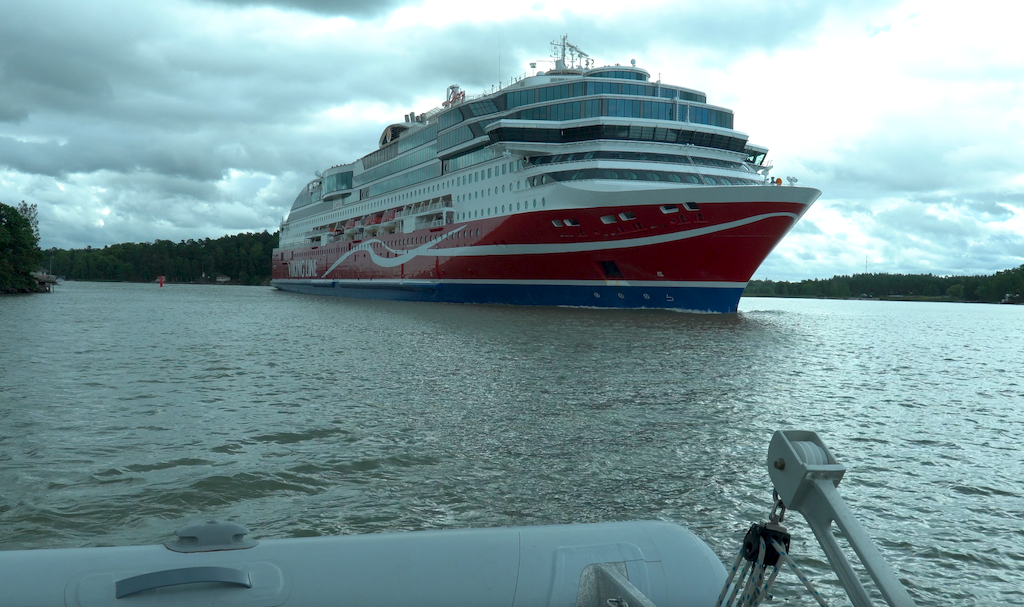
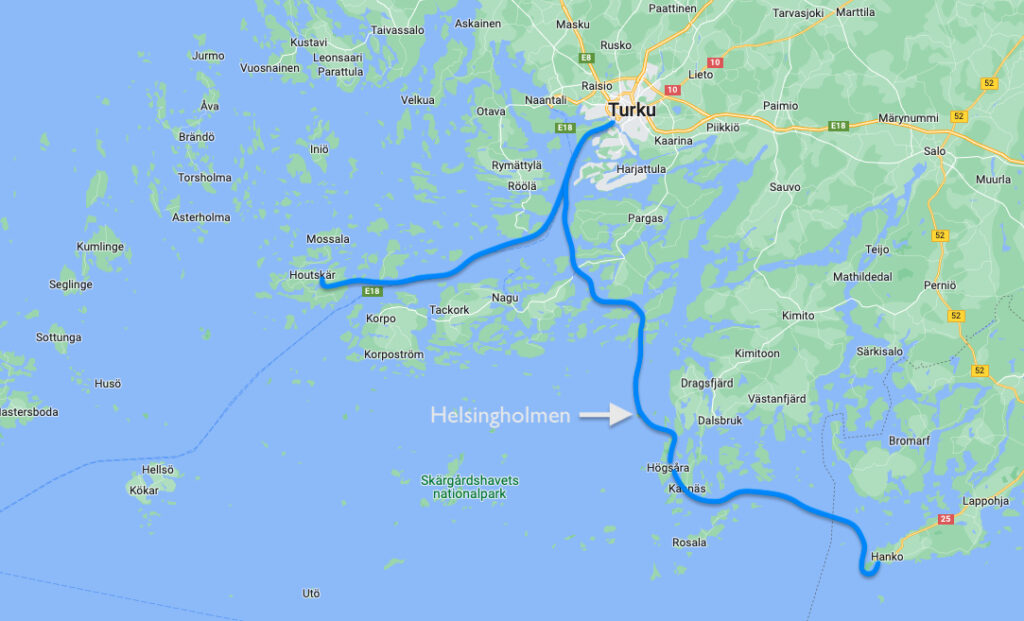
Clear of the narrowest part of the channel, we were free to raise sails on a close-hauled course to the island of Helsingholmen. Gusty winds encouraged us to put a reef in the mainsail. Sea Rose loves these conditions. I have never owned a boat that goes to windward as well as she, particularly on a gusty but flat water course. The wind oscillated between pushing us hard over on our ear and then softening to the point that we would need to shake out the reef. This yin and yang continued until finally it was time to motor into Helsingholmen, where a fellow sailor directed us to side-tie to a stubby end dock. Our bow and stern were overhanging awkwardly, and our keel was kissing the ground. So it was with some relief when the actual harbor owner arrived and politely asked us to go out and drop our bow anchor and come stern to the dock. With this arrangement, he could fit more boats in our spot, and who is about to argue with a harbor owner who’s trying to maximize income over a ridiculously short season. Soon, other boats were arriving, going bow in, and by nightfall, there were six boats squeezed in to the single spot we had once commandeered. Airline revenue managers would be impressed with how he multiplied his profits!
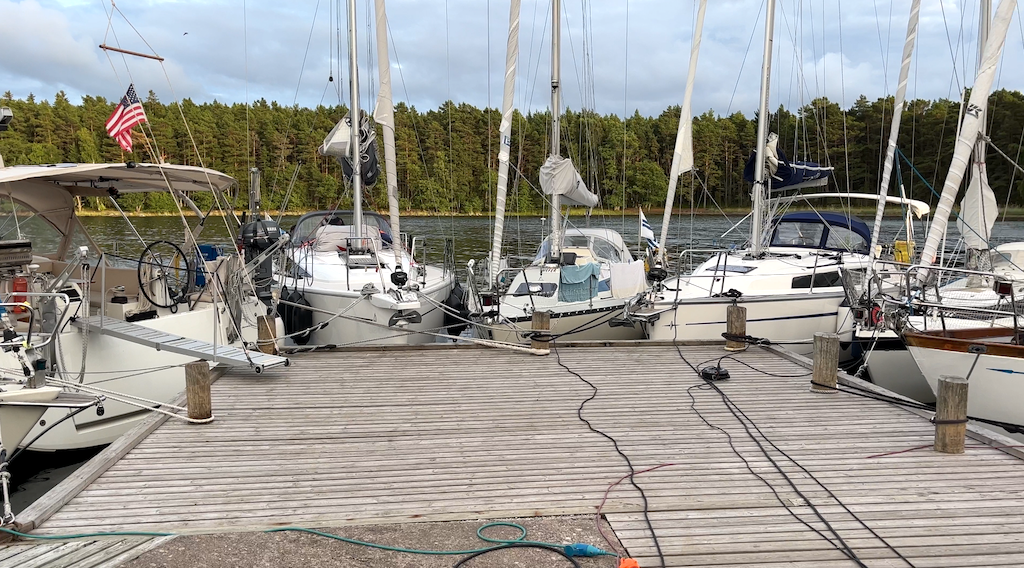
The operation here was charmingly multi-generational as well. Grandpa ran a brisk smoked salmon operation, his son was in charge of docking activities, and the grandson ran the store and sauna signup. Purely to support this family-run business, we reserved an hour at the sauna for the next morning. If only every day could start with a piping hot sauna, interspersed with dunkings in the cool Baltic sea, and only your wife and a flock of sheep as company, I’m convinced there would be no wars, no divorce, and an excess of wool sweaters.

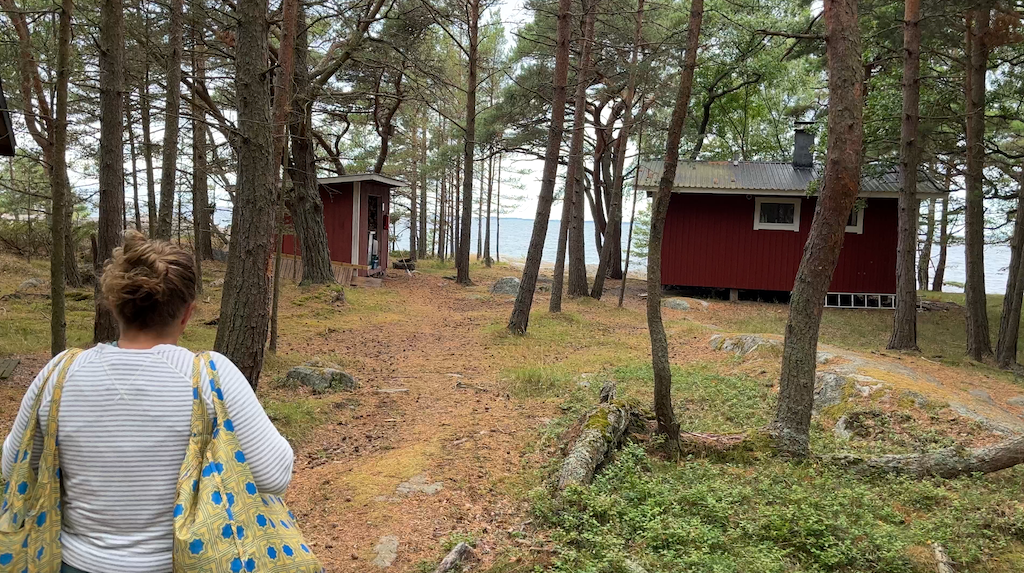
We carried on a short six miles to the island of Hogsara, highly recommended by our friends Heli and Kalle. Like seemingly every other beautiful island in Finland, there was a well run yet simple guest harbor. We opted to anchor though, to give ourselves a break from the docking gymnastics and absorb the freedom of swinging on an anchor while being responsible for our own fate.

Hogsara was a much more lively island than the peace and isolation of Helsingholmen. Heli and Kalle told us not to miss a dinner at Farmor’s Cafe, which we preempted with dockside drinks at the Rumpan Bar, graced with live musical notes from none other than the Hogsara Hipsters. OK, so you probably have not heard of them, but their music was just as fun as their name. The drinks were delightful and dinner was stunning, but more than anything, it left an indelible impression on me how well Finland treats the whole person. By this I mean, the whole age range. At the dock, young kids swayed to the music alongside parents tapping their toes. At the cafe, the staff pulled out all of the stops to entertain, serving delicacies like Atlantic char and chicken with barbecued onions, while kids traded time between the dinner table and enticements like a volleyball court, sandboxes and a dress-up mini theater. This was no Chuck E. Cheese, where parents draw straws for the pleasure of staying home. All generations get their needs met without compromise, without guilt, without regret. It might sound cliche, but it felt like a truly wholesome society. One that many others could learn from.
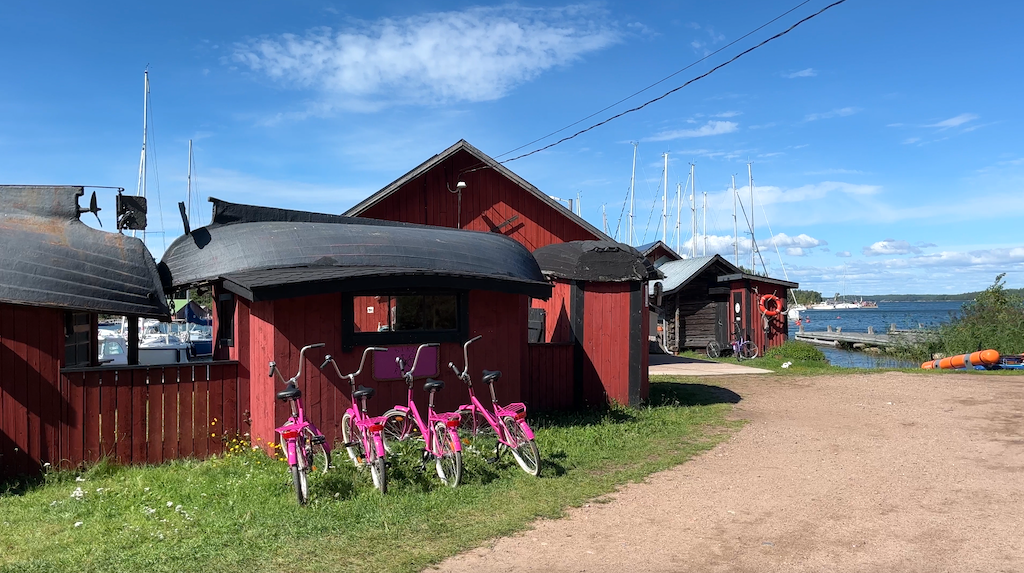

Our ultimate destination after our rambling adventure from Turku was the port of Hanko, located at the very southeastern end of the archipelago. It occupied a strategic position overlooking the Gulf of Finland, a position that served both peacetime and wartime purposes. In the late 1800’s, it was a popular resort for Russian nobility and many well cared for buildings along the water reflected this heritage. Into the early 1900’s, it was the primary embarkation port for Finnish citizens seeking a new life in North America. As a result of a peace treaty with Russia after its conflict with Finland during the Winter War, the Soviets were permitted to lease space for a naval base in Hanko. Today, it is dominated by Finns and foreigners seeking a summer retreat, a stroll by waterfront shops and restaurants, and for a few young athletes, an elite tennis center that grew from the roots of early tennis courts in the 1880’s. For Karen and I, the land-links to Helsinki were the main attraction. We planned to hang up the sailing clothes for a few days and dig out our land touring duds for a little off-the-boat adventuring. Rest up, dear Sea Rose, there’s more to come before this season is in the bag!
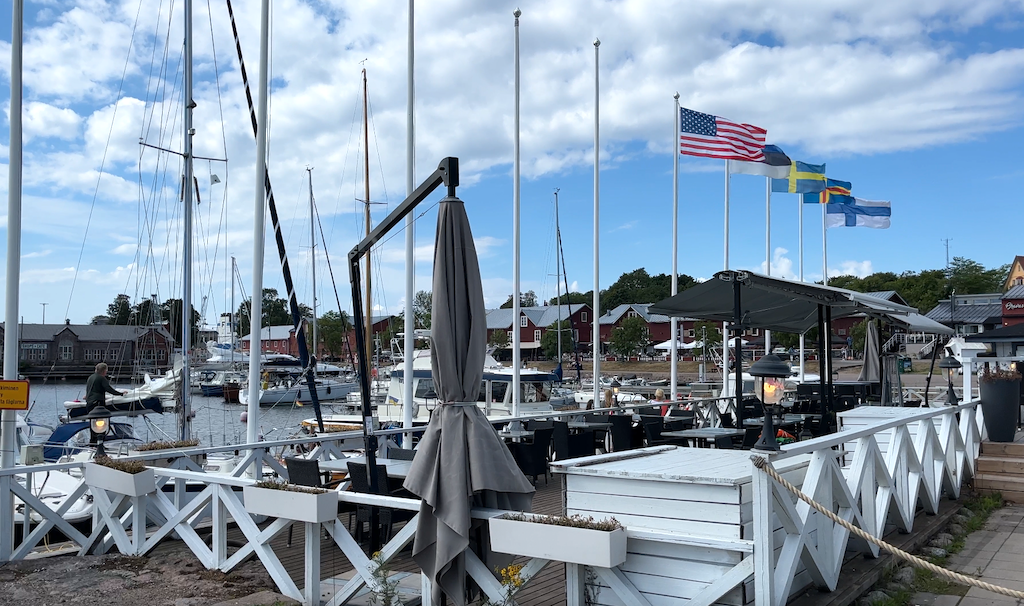
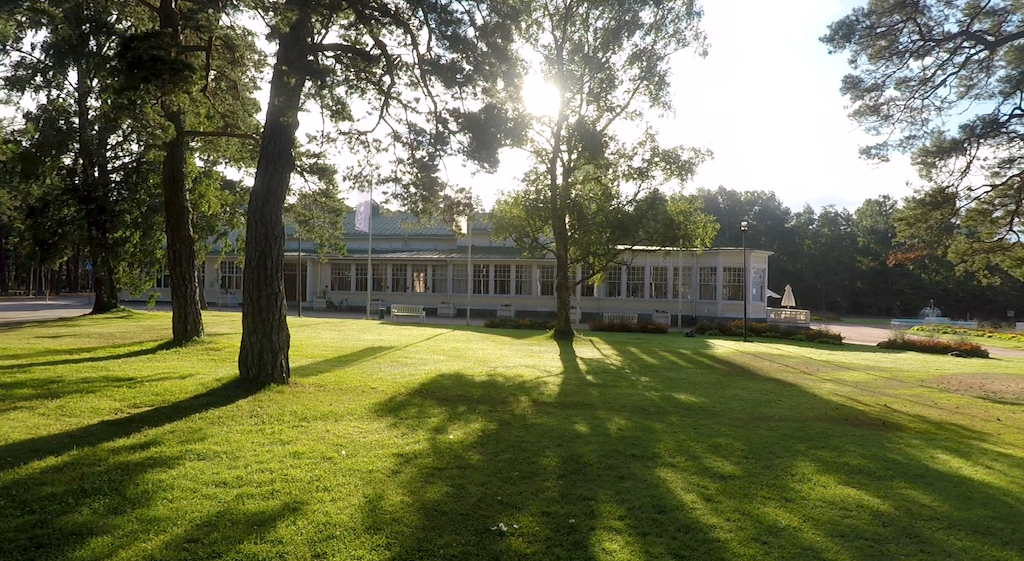
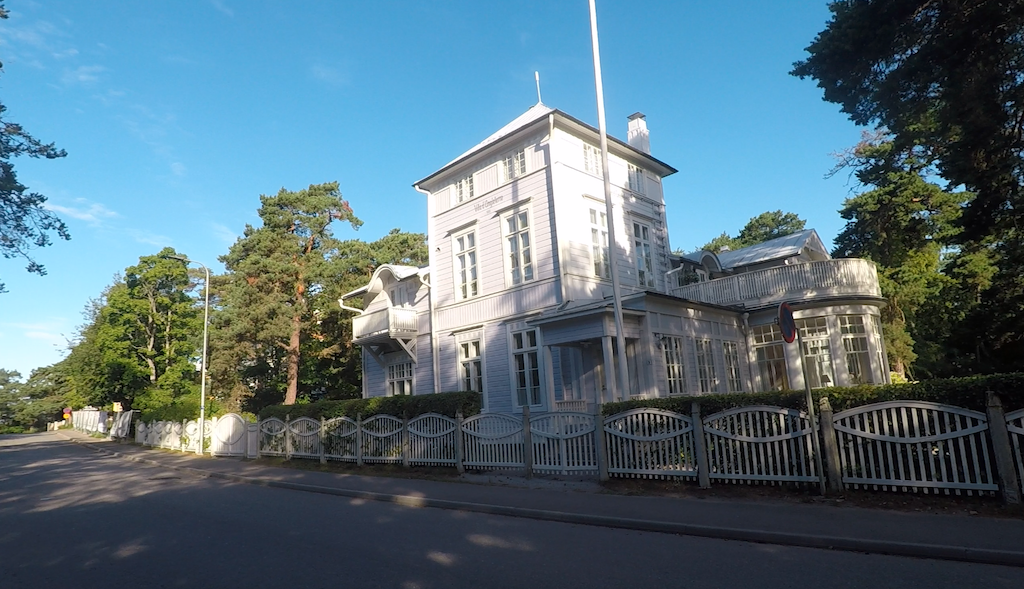
Be sure to also checkout the video content on our LifeFourPointZero YouTube channel. We regularly post updates on our sailing adventures, as well as how to videos on boat repair, sailing techniques, and more!


Hi Guys,
Good you got to experience the US Navy in such an unsuspecting location. Keep the great blogs coming. Great reads. Best to you with fond memories. Bob and Linda Masterson, S/V Villomee of the Caribbean 1500 days.
Thanks very much Bob! Hope you and Linda are well!